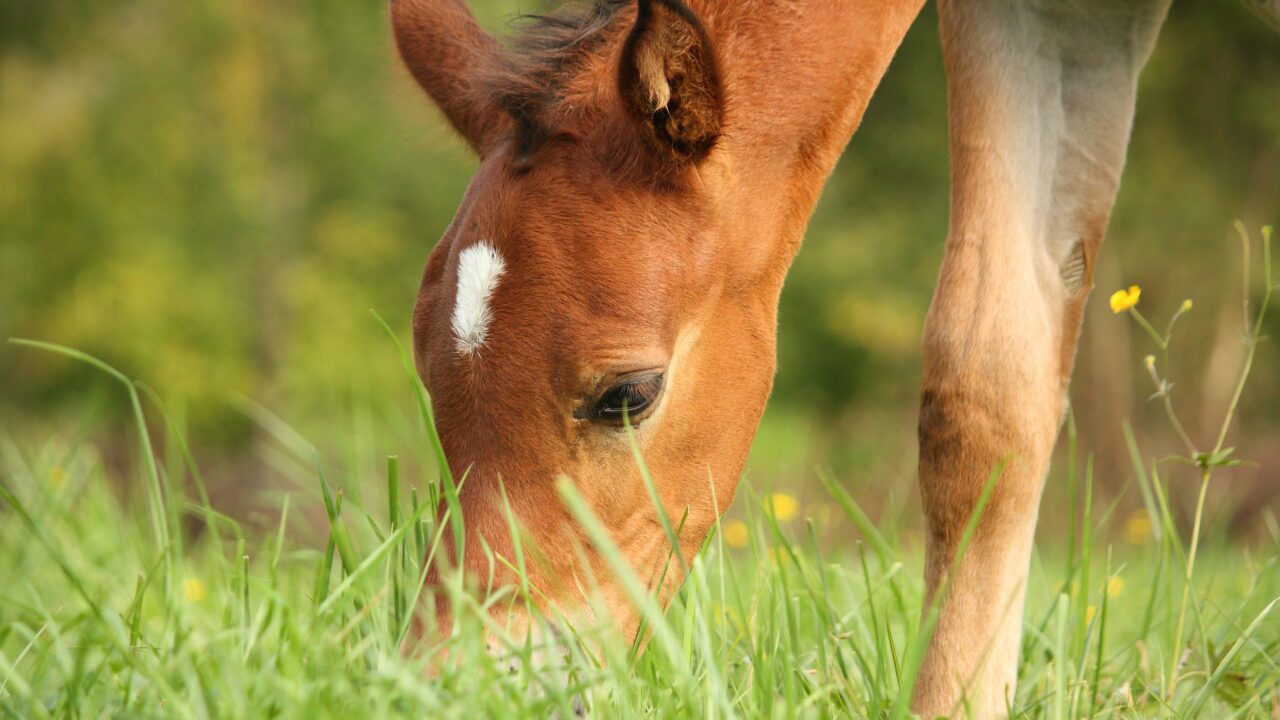We often smell Foal Diarrhoea before we even see it, however it is one condition that we should never under estimate!
Diarrhoea in a young foal can very quickly lead to dehydration and other ailments if not recognized and treated promptly. As a rule of thumb, any foal that is not feeding off the mare and showing symptoms of diarhhoea, should be seen by a vet immediately.
Clinical signs of Diarrhoea are:
- Foal off the suck
- Foal sleeping standing up
- Increased or decreased temperature
- Sunken eyes
- Dry mucous membranes
- Profuse watery diarrhoea
- May appear colicy
- May have a distended abdomen
Common causes of diarrhoea are;
Foal Heat Diarrhoea
Most commonly occurs with the mare’s first oestrus, 5 – 10 days. The foal generally remains bright and continues to nurse well. The duration is usually 2 – 5 days and usually no therapy is required, just cleaning.
Infectios Diarrhoea
Viral Diarrhoea
Rotavirus – Is one of the most common causes of infectious diarrhoea in foals throughout the world. The loss of fluids and electrolytes in the faeces and the fact that the foals are not nursing well means they quickly become dehydrated and can often require treatment with IV fluids.
- The virus is associated with gastric ulceration and is highly contagious.
- Seen in foals from 2 days to 6 months
- Off suck
- Increased rectal temperature, followed by breakout with diarrhoea after 1-2 days
- Sunken eyes
- Dry mucous membranes
- Diarrhoea ranges from watery to pasty and from bright yellow to grey in colour, with a very distinct odour.
- Clinical signs generally last 6-7 days
- Overcrowded conditions increase the likelihood of the disease developing.
Bacterial
- E.Coli – Foals with diarrhoea caused by E.coli are generally unwell systemically or are septicaemic.
- Salmonella – Rapid onset of clinical signs. The diarrhoea may range from cowpat to profuse, foul smelling liquid.
- Increased or decreased rectal temperature
- Increased Heart Rate and Respiratory Rate
Colicy
Zoonotic – highly contagious to humans
Clostridial
- Most often seen in foals less than 3 days old. Foals may die of shock before they develop diarrhoea
- Acute onset of abdominal pain
- Dehydration
- Profuse watery or bloody diarrhoea
- Faeces may also be bloody
Protozal
- Cryptosporidium parvum (Crypto) – Typically occurs in immuno-compromised foals.
- Highly contagious, strict isolation protocols need to be in place.
- Zoonotic – highly contagious to humans
Parasitic Diarrhoea
- Parasitic burden can cause diarrhoea in foals as young as 2 weeks of age. Infection occurs by ingesting milk infected with larvae, or eggs/larvae in faeces.
- May show signs of fever, colic and depression
- Routine worming of the mare during pregnancy and lactation will help prevent this.
Nutritional
- This is relatively common, especially when foals are fed artificial diets. Also due to the consumption of excessive amounts of milk after the foal has been separated from the mare, or over feeding of ill or orphaned foals.
- Milk intolerance, with signs of bloat, colic and gastric reflux can occur in sick foal’s with diarrhoea.
Antibiotic Induced
- Antibiotics may play a role in the development of diarrhoea, primarily due to the alteration of the gut microflora. Discontinuation of the antibiotic treatment if practical is required or
- Supply of a supportive therapy, such as yoghurt and gastroprotectants.
Prevention / Management Of Foals with Diarrohea
- Avoid overcrowding in foaling paddocks, especially as the season progresses.
- Quarantine visiting horses for at least 2 weeks.
- Isolate animals with diarrhoea
- Wash hands thoroughly after handling animals with diarrhoea. Best to wear overall and gloves also.
- Ensure animals are drenched and vaccinated in accordance with protocols.
- Disinfect stalls, crush area etc where diarrhoea foals have been. Rest paddocks.
- Young foals with symptoms of diarrhea can deteriorate rapidly.
If in doubt, always phone your veterinarian as early detection is always best for a successful outcome.

